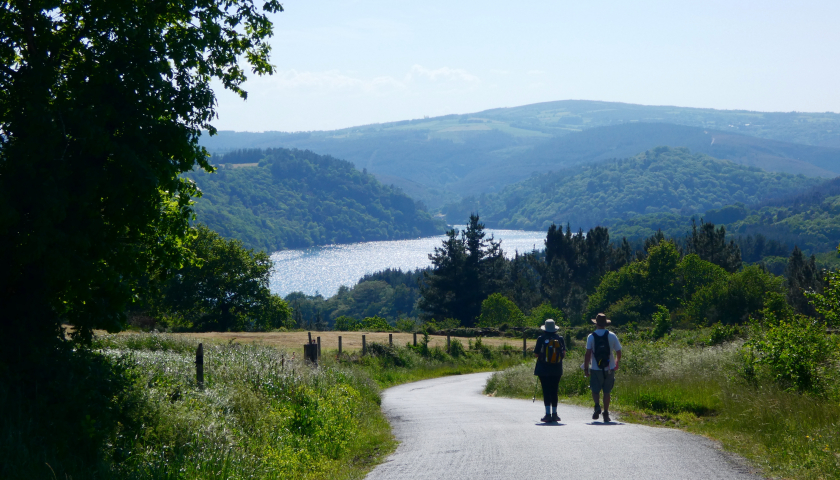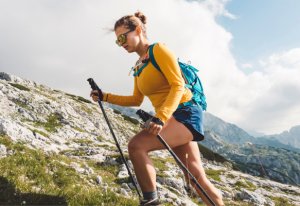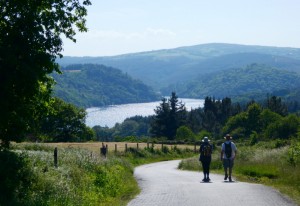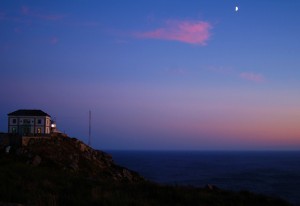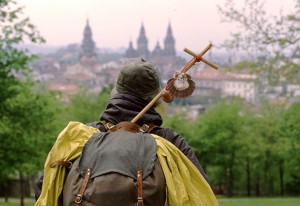The Camino del Norte is one of the most beautiful and yet most unknown routes to Compostela. The entry point of the Camino del Norte in Galicia is Ribadeo. From this beautiful village you will travel two hundred kilometers on foot until you reach the Plaza del Obradoiro in Santiago de Compostela.
Through green Spain, you will discover towns with amazing nature. Next, we are going to see the different stages through which the Northern Way runs from Ribadeo to Santiago de Compostela. Let’s go there!
Stage 1 “Ribadeo – Villamartin Grande” (18 Km).
The first stage begins on the plain through Ribadeo. You will first walk through its Historic Center and little by little you will leave the population center to enter a natural environment. Step by step you will ascend until you reach the Ermita del Carmen in Vilela.
You will continue walking to the small village of Villamartín Pequeno from which you will begin to descend until you reach the Chapel of the Virgen del Carmen in Villamartín Grande.
Stage 2 “Villamartín Grande – Mondoñedo” (18 Km).
From Vilalmartín el grande you will start the stage that will take you to Mondoñedo. You will start the stage descending and flattening, but soon you will begin to ascend to reach the Church of San Xusto de Cabarcos. From San Xusto you will descend to Lourenzá.
After a steep climb at the end of Lourenzá, little by little the Camino will moderate and you will descend to reach Arroxo. Already on the flat, you will walk through the first streets of Mondoñedo until you reach its Historic Center.
Stage 3 “Mondoñedo – Abadín” (18 Km).
From Mondoñedo there are now two alternative routes to get to Abadín; the most common, misnamed “complementary path”, passes through the beautiful Valiñadares valley and the village of Lousada, with a long but very gradual ascent.
The other route, although it is called “main”, was not marked by the Xunta until 2017; This one goes through the mountains and is 3.6 km shorter, although it is much harder and lacks intermediate populations.
Stage 4 “Abadín- Vilalba” (20 Km).
At this stage you will not find too many unevenness. It is a pleasant stage, interesting in terms of landscape and with few slopes. We will advance along comfortable dirt or asphalt tracks between green meadows and groves of native trees, always close to the N-634 national road, which we will cross on a couple of occasions.
Stage 5 “Vilalba – Baamonde” (19 Km).
Again, the flat terrain greatly facilitates the development of this stage. We cross the Magdalena and Trimaz riverbeds, excellent rivers with submerged vegetation, to reach San Xoan de Alba. Undoubtedly the best section, since after the stage it is a continuous dance along paths parallel to the N-634.
Highlights the beauty of the church of San Alberte and several medieval bridges.
Stage 6 “Baamonde – Sobrado dos Monxes” (39.8Km)
Stage too long for the common mortals; luckily it can be divided thanks to the opening in recent years of hostels in several intermediate villages.
In it you will advance along dirt or asphalt tracks through a rural and lonely territory, which survives thanks to the family-oriented livestock activity.
Stage 7 “Sobrado dos Monxes – Arzúa” (22 Km).
From Sobrado dos Monxes you will reach Arzúa, where the Northern Way joins the French Way. Step by step you will reach Arzúa, the “Land of Cheese”. In this town you can taste its famous and delicious Arzúa-Ulloa Denomination of Origin cheese.
Stage 8 “Arzúa – A Rúa” (21 km)
This is a comfortable stage, since it does not have many kilometers and the profile is smooth. One of the few inconveniences that you may find is that you will have to cross the N-547 several times without the help of pedestrian crossings.
Stage 10 “A Rúa – Santiago de Compostela” (21 km)
During this stage you will make a pilgrimage along paths of eucalyptus, oak and pine trees and also along forest tracks until you reach Santiago de Compostela, where emotions will run high.
Remember that on our social networks we will keep you up to date with all the news that arises, follow us on Facebook or Instagram!
In addition, we encourage you to share with us your experience traveling the Camino de Santiago on these social networks by tagging us or including the hashtag #alberguesdelcamino in your post. We wait your photos!







